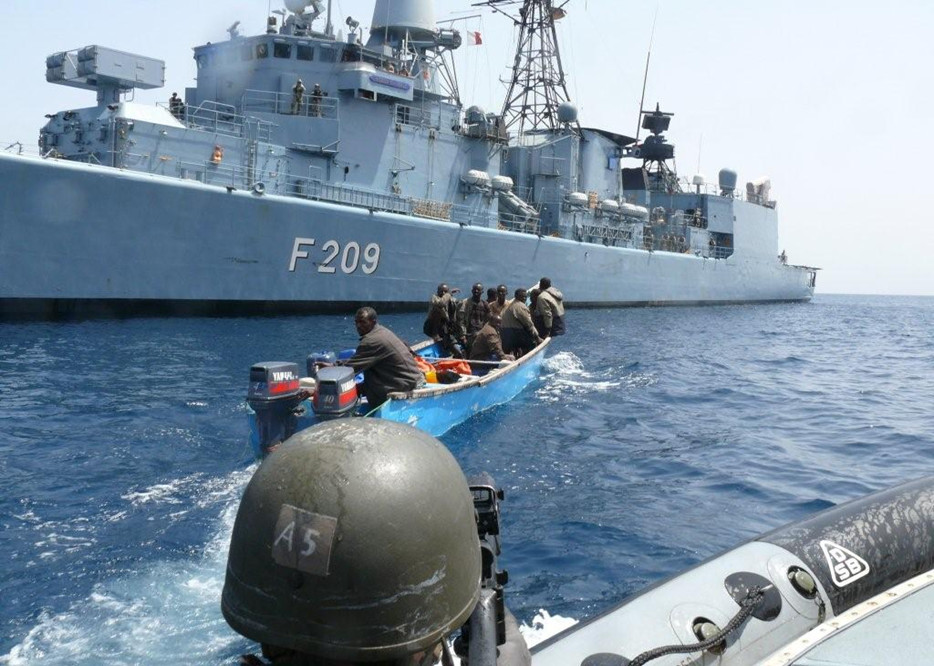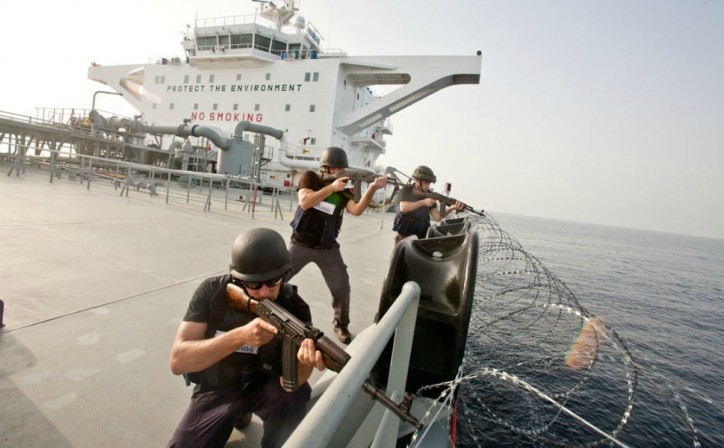Royal Caribbean cancels cruise because of Houthi Attacks in Red Sea
Table Of Content

The U.S.S. Mason pursued the attackers and forced them to surrender, the news release said. Uploaded by user @trogelstad on March 6, the video depicts scenes from a cruise ship accompanied by dramatic on-screen captions detailing a supposed encounter with pirates. The frigate Numancia has detained nine suspected pirates who may have been involved in the attack on the MSC Melody. After being detained, the men were turned over to the authorities in the Seychelles because the attack took place in that country's waters.
Pirate Activity in Maritime Regions
Christina Lamb: My 'holiday' cruising through pirate-infested waters - The Times
Christina Lamb: My 'holiday' cruising through pirate-infested waters.
Posted: Sat, 13 May 2023 07:00:00 GMT [source]
First, they are faster than the small boats used by pirates and can easily escape even determined attackers. The weapons they wield have always made pirates so intimidating, and this is especially true today, when modern pirates use everything from night vision goggles to rocket launchers to loot ships. This may read like the script of a Hollywood thriller, but new reports from eyewitnesses show that the attack on Saturday evening was considerably more dramatic than accounts provided so far would suggest. Pierfrancesco Vago, head of the Italian shipping company MSC, confirmed the version that cruise ship passengers gave to SPIEGEL ONLINE, describing their statements as "authentic."
Onboard Surveillance Systems
A look at @trogelstad’s TikTok page reveals dozens of similar videos featuring ordinary footage overlaid with extraordinary claims, ranging from paranormal activity to incoming tsunamis, all set to eerie background music. The cruise line, apparently, doesn't want to have to rely on luck again as it did on Saturday. The details also tell a lot about the pirates -- the extent of their audacity and their high level of organization. There are four issues per year, with each issue is packed full of must-read features, including cruise news, reviews, destination guides and the most enticing itineraries.

Best cruises from Southeast Asia from $462pp for five nights
The Straits of Malacca and Singapore, the South China Sea, the Red Sea, and the Caribbean Sea have also experienced instances of piracy, albeit to a lesser extent. Cruise lines must assess the risk and keep abreast of any recent incidents in these areas to ensure the safety and security of their passengers and crew. One of the primary defensive tools cruise ships employ is the LRAD or Long-Range Acoustic Device. This state-of-the-art technology emits a high-pitched, directional noise that can disorient and repel potential attackers. LRAD systems are strategically positioned on cruise ships to create a sonic barrier against pirate threats.
Q1. What was your role in cruise ship security?
Cruise lines have protocols in place to gather and secure passengers in designated assembly areas or safe rooms, such as citadels. These areas are reinforced and equipped with necessary supplies, communication devices, and emergency equipment to sustain occupants until assistance arrives. Additionally, the waters around Nigeria, particularly in the Niger Delta and the Gulf of Guinea, are known for high levels of piracy. Criminal groups in the region often target vessels to hijack and steal cargo, including oil tankers and supply ships. Cruise ships that navigate near these areas must be vigilant and take necessary precautions to avoid potential pirate attacks.
Cruise lines employ security professionals who undergo specialized training and are equipped to respond effectively in emergency situations. One well-known incident occurred in 2005, when the Seabourn Spirit, a luxury cruise ship, was attacked by pirates off the coast of Somalia. The ship managed to evade the attackers and no passengers were injured, but the incident raised concerns about the safety of cruise ships in the region. In response, cruise lines began rerouting their ships away from the coast of Somalia and implementing additional security measures to protect against potential pirate attacks. To protect against pirate attacks, cruise ships implement a variety of measures aimed at mitigating the risk and ensuring the safety of passengers and crew members. These measures are designed to deter and impede pirates from boarding the vessel, giving the ship and its security personnel valuable time to respond effectively.

In conclusion, the cruise industry’s commitment to security and the implementation of robust measures demonstrate their dedication to passenger and crew safety. Measures to mitigate pirate attacks include ship hardening techniques, such as reinforced windows, doors, and barriers, as well as the deployment of sonic devices and the use of citadels as safe rooms. Security personnel play a crucial role, receiving specialized training and working in coordination with other departments to ensure a swift and efficient response to potential threats. To conclude, cruise ships are very safe, and no one should fear pirate attacks. Statistics show that cruise ships are safer than land and that the security and maritime professionals on board are well-trained to handle any situation in the rare event that it would happen. In some cases, cruise ships operating in high-risk areas may even have security personnel from local naval authorities or coast guards on board.
Mission possible: Onboard the Scenic Eclipse II
This includes information on the level of pirate activity, recent incidents, and any operational changes in response to emerging threats. By staying informed, cruise ships can adjust their security protocols accordingly and maintain a heightened state of vigilance. Furthermore, cruise ships maintain constant communication with relevant authorities, such as naval forces and coast guards in the area. This collaboration enables real-time exchange of information and intelligence regarding potential pirate activities. By staying in close contact with external security forces, cruise ships can receive updates on the current security situation in the region and adjust their routes and onboard security measures accordingly.
European ocean cruises
In collaboration with maritime security forces, cruise lines work to strengthen their security measures. They often liaise with local naval authorities and security agencies to gather intelligence and receive updates on pirate activity in the areas they navigate. This cooperation helps cruise lines stay informed and make informed decisions regarding route planning and the implementation of additional security measures. While these are some of the more notable piracy hotspots, it is important to note that pirate activity can occur in other maritime regions as well.
That said, some support is available for ship operators cruising in troubled waterways. And other countries have beefed up security for cruise ships (as well as cargo vessels) around the busier areas. They often work together to keep ships safe; it's more common now to see ships cruising through the Gulf of Aden, for instance, in a convoy of other vessels with protection at both ends. Navies from various nations, as well as NATO and the European Union have all shared in the patrolling duties.
Instead of going through the Middle East, the MSC ships will sail with no passengers on board and go around Africa. There have been more than 60 recorded attacks so far, and the incidents have drawn a military response from a number of countries, including the United States. A TikTok user claiming their cruise ship has been surrounded by “real life” pirates has gone viral, but upon closer inspection, viewers are questioning the claims in the clip.
One of the primary ship hardening techniques is the reinforcement of windows, doors, and barriers. Cruise ships are equipped with sturdy windows made of laminated glass or polycarbonate materials that are resistant to impact and shattering. This makes it difficult for pirates to gain access to cabins or public areas through windows.
Razor wire barriers effectively reinforce the ship’s perimeter, providing additional protection against unauthorised intrusions. Cruise ships are designed with reinforced structures and features that make it difficult for pirates to gain access to the ship. Reinforced windows, doors, and barriers are common deterrents, as are increased fencing and razor wire surrounding ship perimeters. Some ships are also equipped with citadels, safe rooms where passengers and crew can take refuge in the event of an attack. However, these recent maneuvers failed to prevent three alleged Somali pirates from boarding and hijacking the vessel.
We asked him some questions regarding his time in ship security to highlight the effectiveness of cruise ship security. Although piracy can theoretically occur anywhere, the chances are most likely to happen in high-risk areas. To get to the most scenic and exotic parts of the world, some cruise ships sail through these areas, vastly increasing the risk of piracy.
By working hand-in-hand with maritime security forces, cruise lines can leverage the expertise and resources of these agencies to enhance their security measures. This collaboration reinforces the commitment to maintaining a secure environment for passengers and crew members, demonstrating the collective effort in tackling the threat of piracy in maritime regions. By investing in well-trained security personnel and providing them with the necessary tools and knowledge, cruise lines demonstrate their dedication to the safety and security of their guests. The next section will explore the onboard surveillance systems employed by cruise ships to enhance security measures.
Comments
Post a Comment